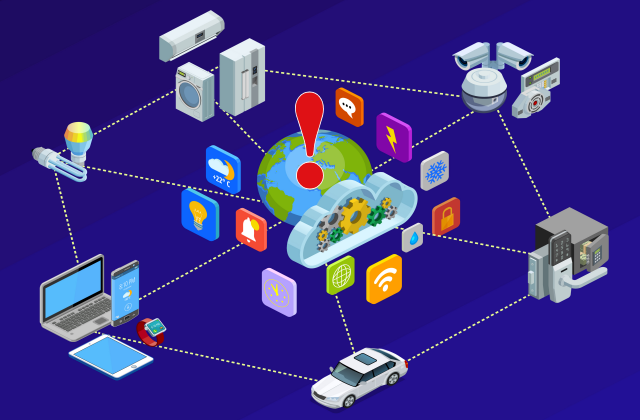IoT
The internet of things, or else IoT, is a term that is used a lot in the modern world. This term refers to everyday ‘things’ that can be connected to each other. The majority of internet users in the future will consist of semi-intelligent devices, so called embedded systems. Examples of these connected ‘things’ are; the connection between your smartphone and your gas/electricity meters or the connection between your smartwatch and your home security system. By connecting all these devices one could create a so called smart home system. These are examples of how IoT could work in your daily live but as you might expect it will also be of great value for specific industries. IoT can disrupt complete industries by creating new ecosystems. IoT is therefore of great value and this technology will dominate the future, but of course the technology will also involve security risks. One big risk of IoT is the vulnerability for cyberattacks. In this short blogpost I will shortly discuss this vulnerability concerning DDoS cyber-attacks.
DDos Attacks
As the technology of IoT evolves more and more devices are being connected to the internet. These devices are not well protected or protected at all. This increase in badly protected devices connected to the internet is dangerous. Researchers already warned us that cyberattacks with IoT devices increase very quickly. A cyber-attack that has risen sharply since the rise of IoT is the so-called DDoS attack. DDoS stands for distributed denial of service. In easy words this attack floods a specific website with unwanted traffic resulting in crashing servers, so that the desired visitor, for example, customers can no longer visit the website. You might think, why are these DDoS attacks related to the emergence of IoT? Well, to make a DDoS attack successful an attacker needs a big network of devices connected to the internet, and IoT offers just that, it connects daily multiple daily devices to the internet. The attacker will create a big infected network, called a botnet, by spreading malicious software to all of these devices. In the end the attacker will flood the server with unwanted traffic from this botnet, resulting in crashing servers.
A shift in cyber security awareness
Who is responsible for the cyber safety of devices connected with IoT? Are manufacturers or consumers to blame? Both are to blame, manufacturers are striving for high profit margins, resulting in a lack of good quality components that makes devices vulnerable, whereas consumers are lacking cyber security awareness. Consumers are not aware of the potential dangers of poorly secured IoT devices, which means that manufacturers are not encouraged to make safer products. To make IoT safer, bot manufacturers and consumers need to become more aware of cyber security. More awareness at customer’s side will incentivize manufactures to make safer products.
To conclude, the IoT technology has a huge potential and will rise sky-high, nevertheless we need a shift in cyber security awareness to prevent us from being extremely vulnerable, as more people will become increasingly dependent of IoT ecosystems.
Sources:
http://www.infiniteinformationtechnology.com/iot-smart-city-what-is-smart-home
https://blog.f-secure.com/attack-landscape-h1-2019-iot-smb-traffic-abound/
http://precisionmarketinggroup.com

